
OR
Disability rights during Covid-19 crisis
Published On: December 3, 2020 07:18 AM NPT By: Obindra B Chand and Sudeep Uprety
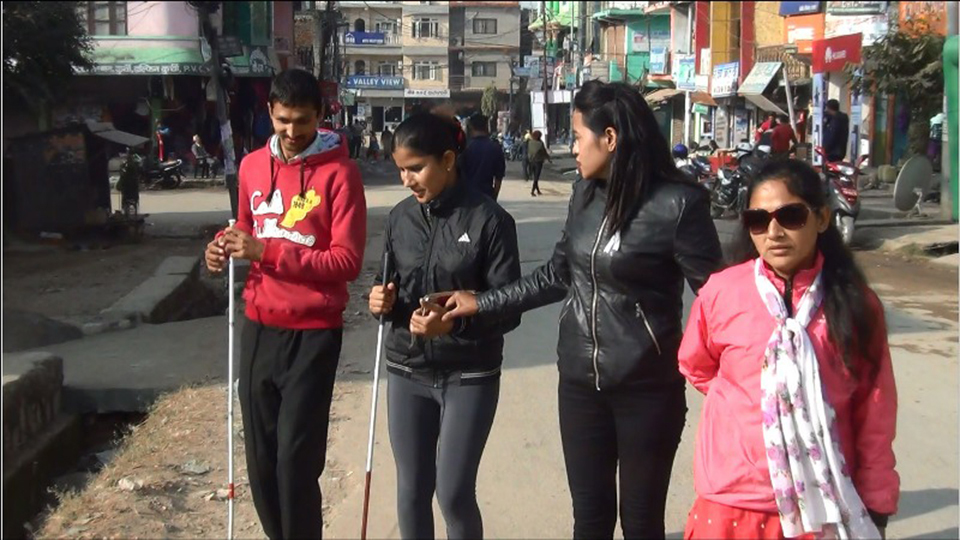
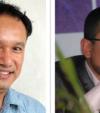
Obindra B Chand and Sudeep Uprety
Obindra Chand is Health and Social Science Researcher at HERD International. Sudeep Uprety is Development Communications Professional.news@myrepublica.com
More from Author
Why are the diverse needs of persons with disabilities not addressed even during the pandemic? Who are actually responsible for this?
Nepal observes the International Day of Persons with Disabilities (IDPD) every year on December 3. This year, Nepal, along with global community, is marking the 29th IDPD with the slogan “Building Back Better: toward a disability-inclusive, accessible and sustainable post COVID-19 world”. The world started to mark the day annually since 1992 with the proclamation of the United Nations General Assembly resolution.
The purpose is to promote an understanding of disability issues and mobilizing support for the dignity, rights and well-being of persons with disabilities (PwDs). Further, it also seeks to increase awareness regarding issues of PwDs in every aspect of political, social, economic and cultural life among others.
Globally, approximately 15 percent of the total population (over a billion) lives with some forms of disabilities. In the Asia Pacific region, it accounts for approximately 690 million people. In Nepal, Central Bureau Statistics data shows approximately over half a million PwDs living across the country, with higher population in the mountain region. However, disability rights activists in Nepal argue that the number is contested. There is the issue of stigmatization against disability compounded with issues of health system and service delivery for addressing and responding to the health and public health needs of marginalized and vulnerable population.
Significant social and political changes have taken place in Nepal in the last five decades resulting in safeguarding of various rights and provisions related to social justice to address the issues and concerns of marginalized groups including PwDs. This has given birth to several policy provisions and legal frameworks nationally in line with international goals and agendas.
The government of Nepal first addressed the issue of disability by introducing Disabled Protection and Welfare Act 1982 in response to the UN promulgation of Action Concerning to Disabled Persons (1982). The Act has secured several rights and benefits, including waiving educational fees and free medical examinations among others to PwDs.
Similarly, in 2010, the government officially ratified the UN Convention on the Rights of Persons with Disabilities (CRPD). The CRPD aimed to complement and strengthen the existing laws and policies triggered by the Disabled Protection and Welfare Act 1982 along with promoting political rights and public participation for the people with disabilities.
The government has also enacted the Disability Rights Act 2017. The 2017 Act protects the political rights of PwDs, particularly the right to be a candidate in an election and to cast vote independently in a fear-free environment, with or without taking others’ support.
The Act not only has contextualized the legal measures of CRPD but has also provided more rights and benefits for PwDs in the country, including constitutional and legal rights and eventually empowering them socially and economically. Moreover, most recently, Health Sector Emergency Response Plan addressing the COVID-19 pandemic has included quarantine facilities also keeping in mind the special needs of PwDs. However, much is yet to be done to translate these policy provisions and legal frameworks into action. As a result, a big number of people are still facing hardships, disproportionate impacts and multiple burdens during the crisis such as the current pandemic.
Medical anthropologist Dr Sachin Ghimire mentions that sympathetic approach is still dominant in Nepali context, when it comes to cases and concerns of PwDs. He argues that equity and social justice are not adequately incorporated in policies and programs. As a result, PwDs suffer especially during emergencies and protracted crises. Dr Ghimire adds that there are no disability-friendly quarantine and treatment facilities for PwDs.
A recent report by National Federation of Disabled Nepal (NFDN) has shown that 45 percent of PwDs were in the urgent need of hygiene materials such as catheter, tube, mask, sanitizer, urine bag, and diaper in Nepal during the Covid-19 induced lockdown. Likewise, the report showed that 41 percent PwDs had a little knowledge and six percent completely unaware about Covid-19 due to inaccessible information and awareness materials. More than 42 percent have little knowledge and six percent have completely no knowledge about the measures to be taken to stay safe from Covid-19 infection.
This raises a few key questions: Why are the diverse needs and requirements of PwDs not addressed even during the pandemic? Who are actually responsible for failing to translate policy provisions into action? Is the state’s duty only limited to introducing and endorsing policy provisions?
Lack of data and information about people with disability has made it more difficult to understand the depth of the problem. Similarly, there is a low representation and participation of PwDs in decision-making positions in all three levels of governments. Access of PwDs in Nepal’s Electoral Process (2018) by International Foundation for Electoral Systems (IFES) and NFDN showed electoral information and communication were in formats that were not largely accessible to PwDs, nor were there alternative methods of voting available to PwDs. Only 15 percent of respondents reported that they had access to electoral information from political parties or candidates, and only 23 percent reported that they had access to electoral information from the media. Currently, there are three members with physical disabilities (all males) in National Assembly representing PwDs community. There are only two representatives in the House of Representatives. At the provincial level, there are only three representatives (one male two females) across all seven provinces. There is no exact data regarding PwDs’ representation in local governments.
Nepal has a long way to go for promoting participation of PwDs in decision making process and creating enabling environment for increasing their involvement in all levels of government. Comparatively, situation is worse in the sub-national level due to structural, political and pragmatic reasons. For instance, many policies are yet to be formulated and implemented at provincial and local levels.
Furthermore, disability is not a homogeneous category. It constitutes diversity within it and concerns and issues differ from a category to another. For instance, the communication strategy for communicating Covid-19 message suitable for people with visual impairment might not be appropriate for people with psychosocial disability.
For several reasons, PwDs are bearing unequal burden in their respective societies and several challenging factors—such as poverty and marginalization—make the situation even more worrisome.
The Covid-19, however, has also highlighted strengths and areas of improvements in many aspects of society including health system of our country. This calls for collective and collaborative effort to address the challenges existing at multiple levels and an interdisciplinary approach to understand the issues in depth and to take immediate and concrete steps to address the needs and requirements of marginalized and vulnerable groups including PwDs. This then would contribute to ensuring establishing social justice, health equity, non-discriminatory community, eventually leading to the situation where everyone can live with dignity and independency.
This will not only add to the meaning and relevance of marking IPDP of 2020 but also contribute to achieving cross-cutting themes of Sustainable Development Goals (SDGs)—leaving no one behind during the times of Covid-19 crisis.
You May Like This
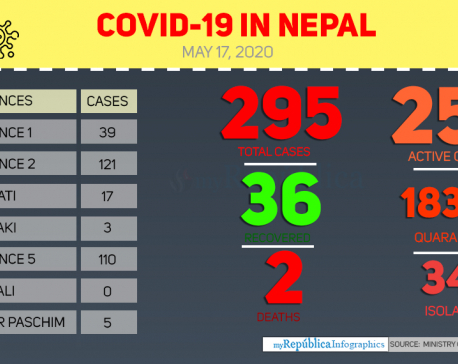
Health ministry confirms three new COVID-19 cases, number of total cases reaches 295
KATHMANDU, May 17: Nepal reported three new cases of COVID-19 on Sunday evening, taking the national tally to 295. ... Read More...
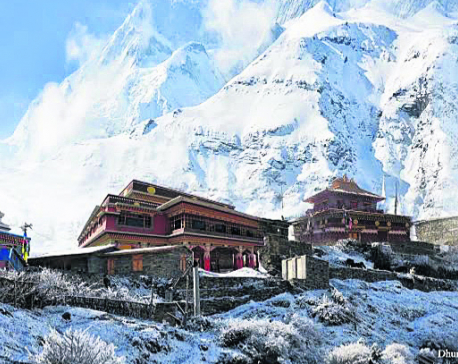
Dhurmus, Suntali to build ‘a Nepal within Nepal’
KATHMANDU, June 5: After successfully completing three settlement projects for earthquake victims and other communities, the actor couple Sitaram Kattel (Dhurmus)... Read More...
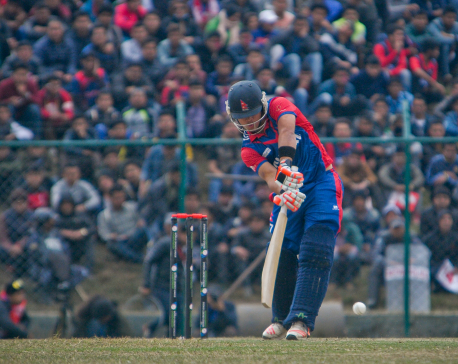
Nepal vs Kenya: Five crucial things Nepal looks for second match
KATHMANDU, March 12: Nepal is taking on Kenya on Monday in the second match of the ICC World Cricket League... Read More...










Just In
- NRB introduces cautiously flexible measures to address ongoing slowdown in various economic sectors
- Forced Covid-19 cremations: is it too late for redemption?
- NRB to provide collateral-free loans to foreign employment seekers
- NEB to publish Grade 12 results next week
- Body handover begins; Relatives remain dissatisfied with insurance, compensation amount
- NC defers its plan to join Koshi govt
- NRB to review microfinance loan interest rate
- 134 dead in floods and landslides since onset of monsoon this year








Leave A Comment